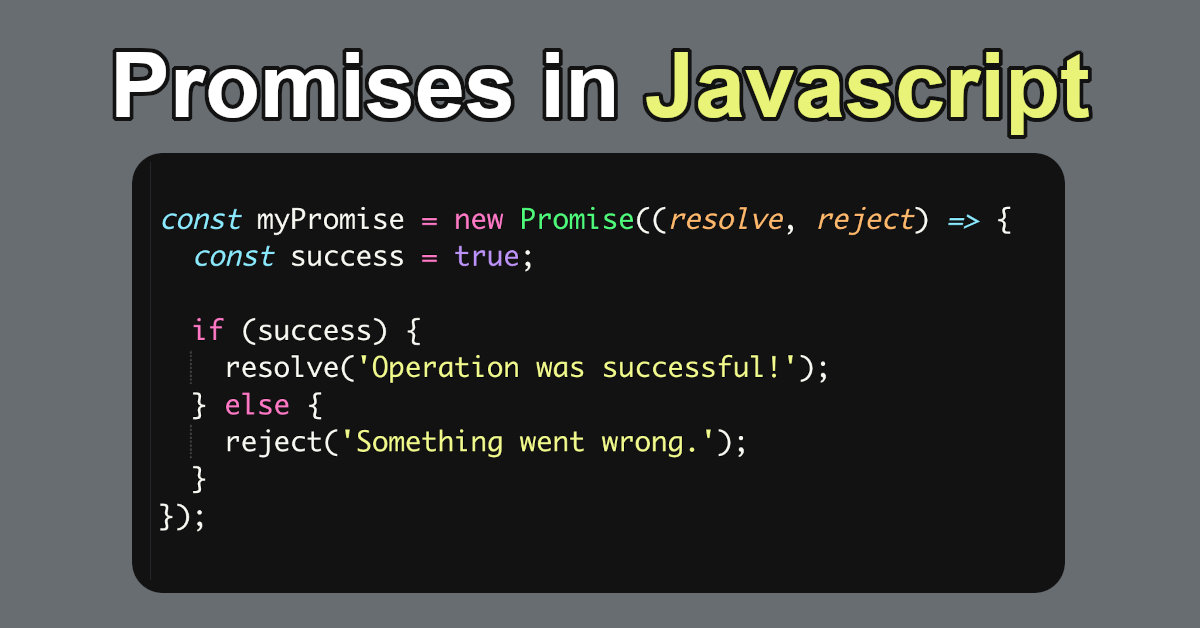In JavaScript, a Promise is an object that represents the eventual completion (or failure) of an asynchronous operation and its resulting value. Promises are a cleaner way to work with asynchronous code compared to traditional callback functions, making it easier to handle success and errors in a predictable way.
1. How Promises Work
A Promise can be in one of three states:
- Pending: The operation is still in progress.
- Fulfilled: The operation completed successfully, and a value is available.
- Rejected: The operation failed, and a reason (error) is available.
Once a Promise is either fulfilled or rejected, it becomes settled, and its state can no longer change.
2. Creating a Promise
A Promise is created using the Promise constructor, which takes a function (executor) with two parameters:
resolve: Call this when the operation succeeds.reject: Call this when the operation fails.
Example:
const myPromise = new Promise((resolve, reject) => {
const success = true;
if (success) {
resolve('Operation was successful!');
} else {
reject('Something went wrong.');
}
});
3. Consuming a Promise
Promises are consumed using .then(), .catch(), and .finally() methods:
then(): Executes when the Promise is fulfilled.catch(): Executes when the Promise is rejected.finally(): Executes after the Promise is settled (either fulfilled or rejected).
Example:
myPromise
.then(result => {
console.log(result); // 'Operation was successful!'
})
.catch(error => {
console.error(error); // 'Something went wrong.'
})
.finally(() => {
console.log('Promise settled.');
});
4. Practical Example
Simulating an Asynchronous Operation (e.g., Fetching Data):
function fetchData() {
return new Promise((resolve, reject) => {
setTimeout(() => {
const success = true;
if (success) {
resolve('Data fetched successfully!');
} else {
reject('Failed to fetch data.');
}
}, 2000);
});
}
// Using the Promise:
fetchData()
.then(data => {
console.log(data); // 'Data fetched successfully!'
})
.catch(error => {
console.error(error); // 'Failed to fetch data.'
});
5. Advantages of Promises
Avoid Callback Hell:
- Promises provide a structured way to chain asynchronous tasks, avoiding deeply nested callbacks.
fetchUser() .then(getUserPosts) .then(showPosts) .catch(handleError);
Error Handling:
- Promises propagate errors through
.catch(), making it easier to handle failures.
someAsyncOperation()
.then(data => {
throw new Error('Unexpected Error!');
})
.catch(err => {
console.error(err.message); // 'Unexpected Error!'
});
Chaining:
- Multiple
.then()calls can be chained for sequential tasks.
6. Async/Await: A Cleaner Syntax
While Promises are powerful, JavaScript introduced async/await in ES8, making asynchronous code look more like synchronous code.
Example:
async function fetchData() {
try {
const data = await fetch('https://api.example.com/data');
console.log(await data.json());
} catch (error) {
console.error('Error:', error);
}
}
Summary
- A Promise is an object for handling asynchronous operations.
- It can be in one of three states: pending, fulfilled, or rejected.
- You consume Promises using
.then(),.catch(), and.finally(). - Promises make code more readable, reduce callback nesting, and handle errors effectively.

